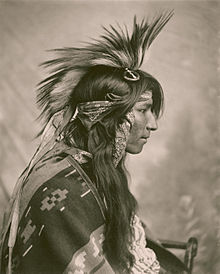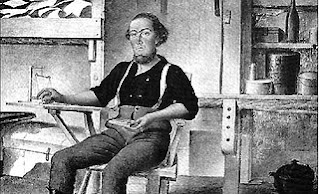The Cree-Neskapi-Montagnais
The various Native subgroups who make up the Algonquian-speaking Cree peoples stretch across Canada from what is now Labrador and Quebec through to Saskatchewan, Manitoba and Alberta in Canada. They are also present in Montana, where they share a reservation with the Ojibwe/Chippewa people. French explorers and traders first encountered the Cree along with the Ojibwe around Lake Superior. The French word Cree is a corruption of Ojibwe terms to describe these people. Each subgroup has their own reference for themselves with the languages they speak. The Cree language is divided between Woods, Plains, Swampy, Moose, Northern East, Southern East, Neskapi, Montagnais and Atikemekw, as well as a Sign Language which is still in use. Cree people number almost 200,000 in Canada alone, making them the largest First Nations/Native group in Canada if not North America.
Running east to west, they are:
Neskapi and Montagnais, often collectively referred to as Innu. They refer to their territories in eastern Quebec and Labrador as Nitassinan. The Neskapi are nomadic and hunt caribou, being one of the most Northern tribes encountered in the 17th and 18th centuries.
Atikamekw, who live in the upper St. Maurice River Valley of Quebec, which they refer to as Nitaskinan, or Our Land.
James Bay Creek-Grand Council of the Cree, who live in the Nunavik and Istchee regions of Northern Quebec.
Moose Cree, who lived on Moose Factory Island in the Cochrane District of Ontario. A factory referred to a trading post headed by an agent or factor, as he was sometimes called.
Swampy Cree, who live in Manitoba along the Hudson's Bay Coast.
Woods Cree, who live in Northern Alberta and Saskatchewan.
Plains Cree, who live in Manitoba, Saskatchewan, Alberta and Montana.
(This post also appears in https://greatwarriorspath.blogspot.com
Running east to west, they are:
Neskapi and Montagnais, often collectively referred to as Innu. They refer to their territories in eastern Quebec and Labrador as Nitassinan. The Neskapi are nomadic and hunt caribou, being one of the most Northern tribes encountered in the 17th and 18th centuries.
Atikamekw, who live in the upper St. Maurice River Valley of Quebec, which they refer to as Nitaskinan, or Our Land.
James Bay Creek-Grand Council of the Cree, who live in the Nunavik and Istchee regions of Northern Quebec.
Moose Cree, who lived on Moose Factory Island in the Cochrane District of Ontario. A factory referred to a trading post headed by an agent or factor, as he was sometimes called.
Swampy Cree, who live in Manitoba along the Hudson's Bay Coast.
Woods Cree, who live in Northern Alberta and Saskatchewan.
Plains Cree, who live in Manitoba, Saskatchewan, Alberta and Montana.
(This post also appears in https://greatwarriorspath.blogspot.com




Comments
Post a Comment